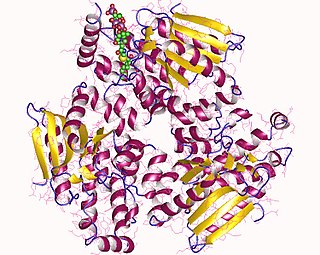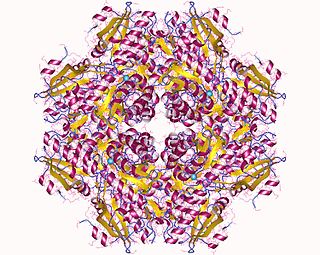This article includes a list of references, related reading, or external links, but its sources remain unclear because it lacks inline citations .(July 2020) |
| 2-chloro-4-carboxymethylenebut-2-en-1,4-olide isomerase | |||||||||
|---|---|---|---|---|---|---|---|---|---|
| Identifiers | |||||||||
| EC no. | 5.2.1.10 | ||||||||
| CAS no. | 115629-29-3 | ||||||||
| Databases | |||||||||
| IntEnz | IntEnz view | ||||||||
| BRENDA | BRENDA entry | ||||||||
| ExPASy | NiceZyme view | ||||||||
| KEGG | KEGG entry | ||||||||
| MetaCyc | metabolic pathway | ||||||||
| PRIAM | profile | ||||||||
| PDB structures | RCSB PDB PDBe PDBsum | ||||||||
| Gene Ontology | AmiGO / QuickGO | ||||||||
| |||||||||
In enzymology, a 2-chloro-4-carboxymethylenebut-2-en-1,4-olide isomerase (EC 5.2.1.10) is an enzyme that catalyzes the chemical reaction
- cis-2-chloro-4-carboxymethylenebut-2-en-1,4-olide trans-2-chloro-4-carboxymethylenebut-2-en-1,4-olide
Hence, this enzyme has one substrate, cis-2-chloro-4-carboxymethylenebut-2-en-1,4-olide, and one product, trans-2-chloro-4-carboxymethylenebut-2-en-1,4-olide.
This enzyme belongs to the family of isomerases, specifically cis-trans isomerases. The systematic name of this enzyme class is 2-chloro-4-carboxymethylenebut-2-en-1,4-olide cis-trans-isomerase. Other names in common use include 2-chlorocarboxymethylenebutenolide isomerase, and chlorodienelactone isomerase. This enzyme participates in 1,4-dichlorobenzene degradation.




